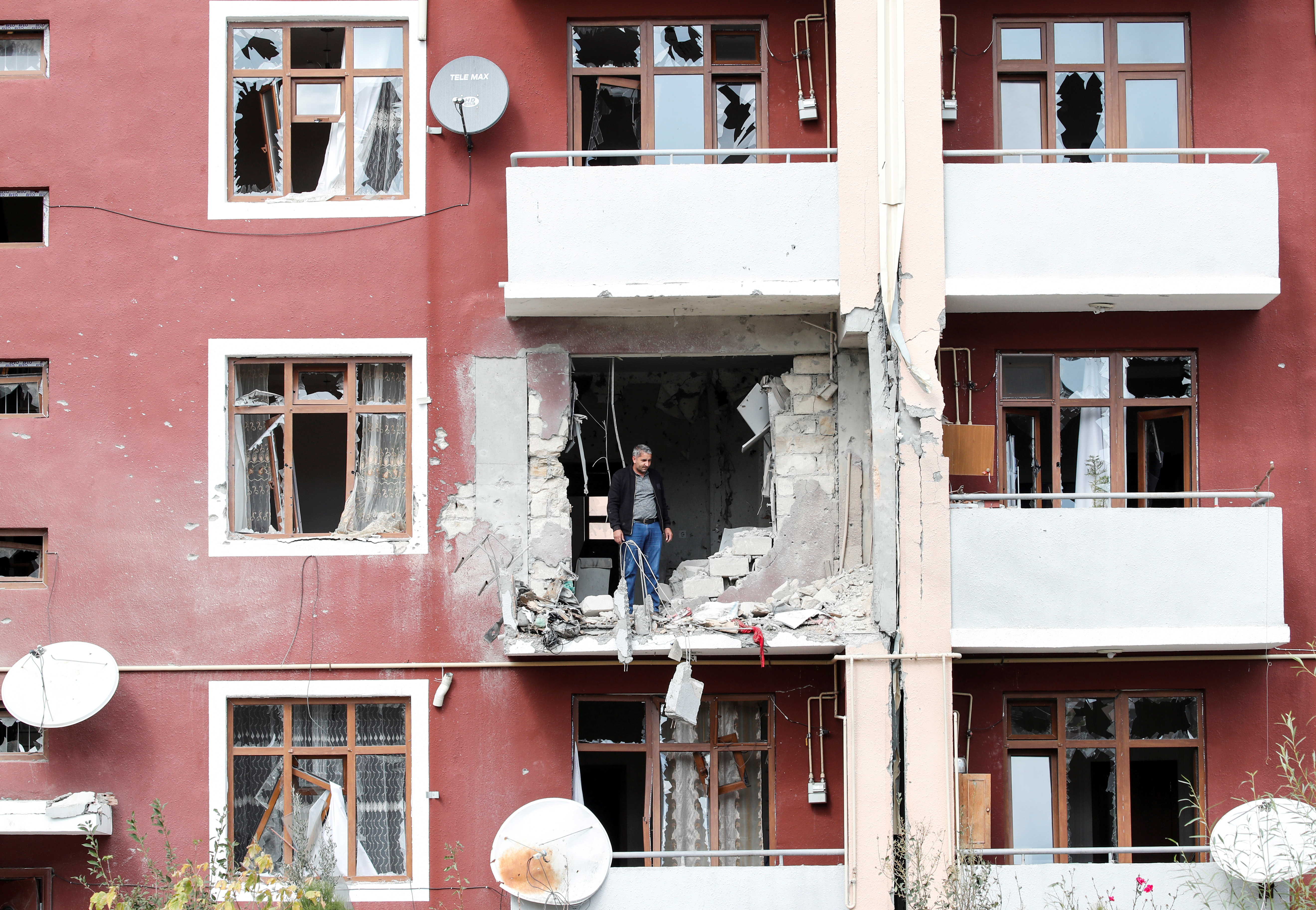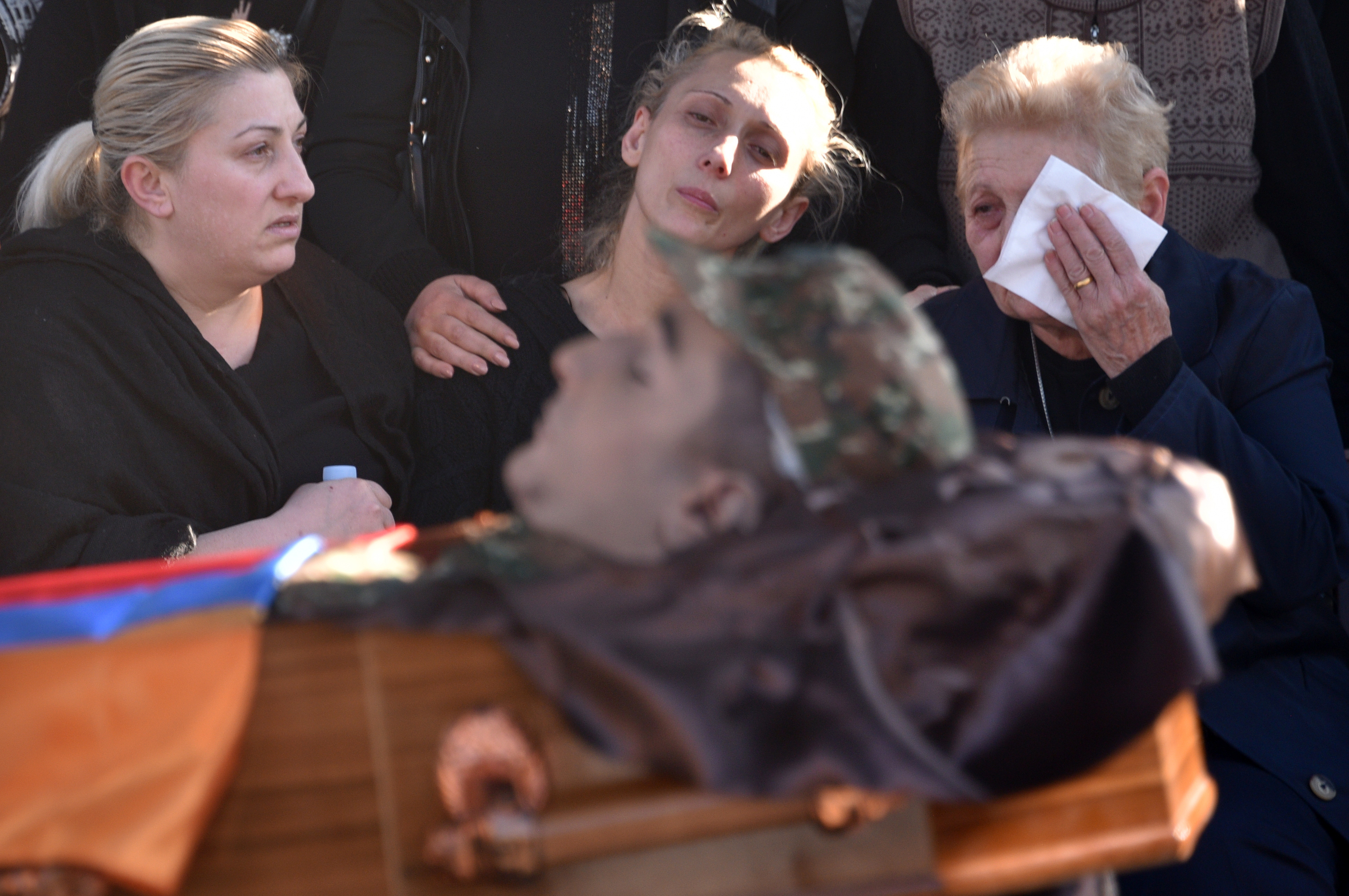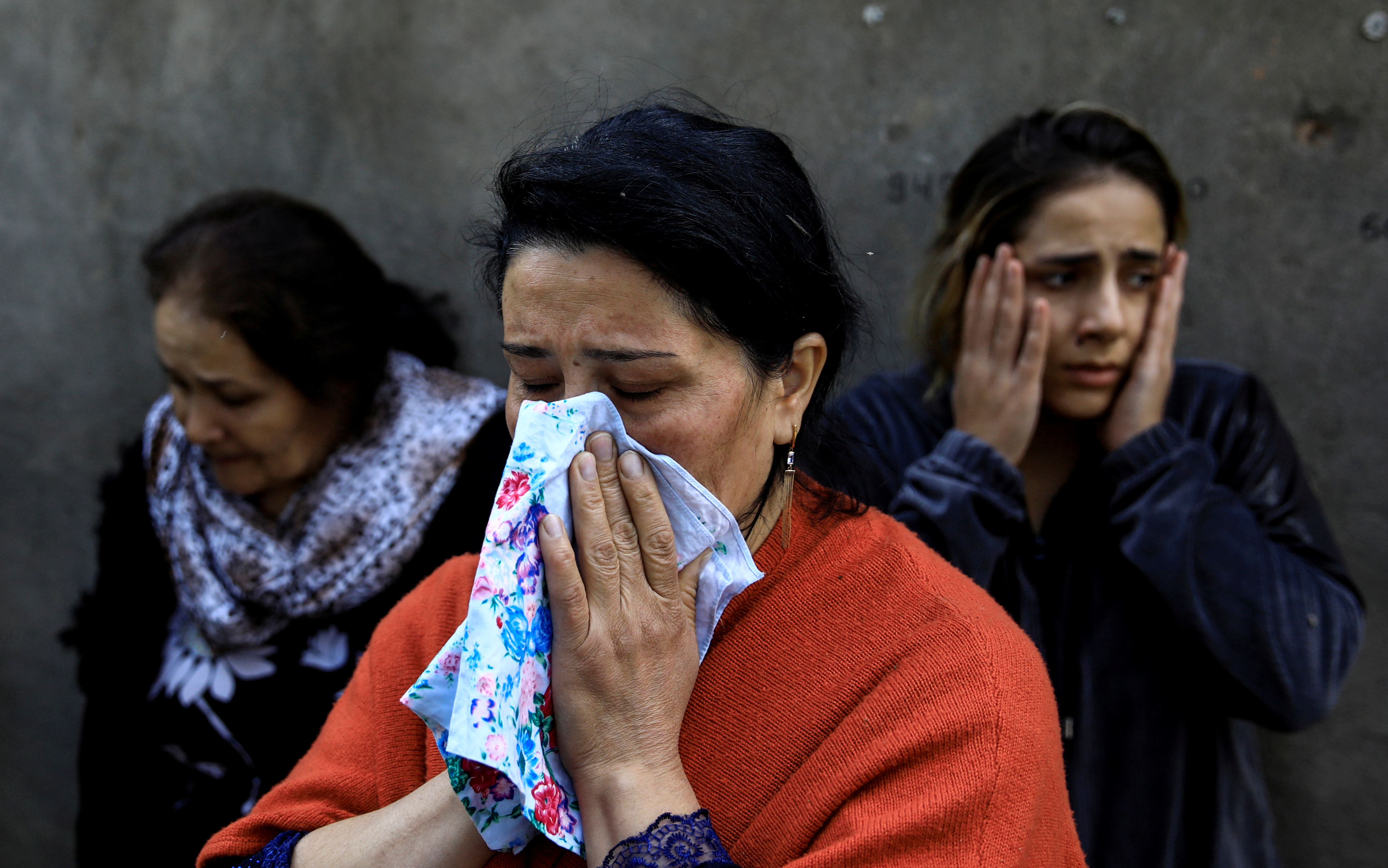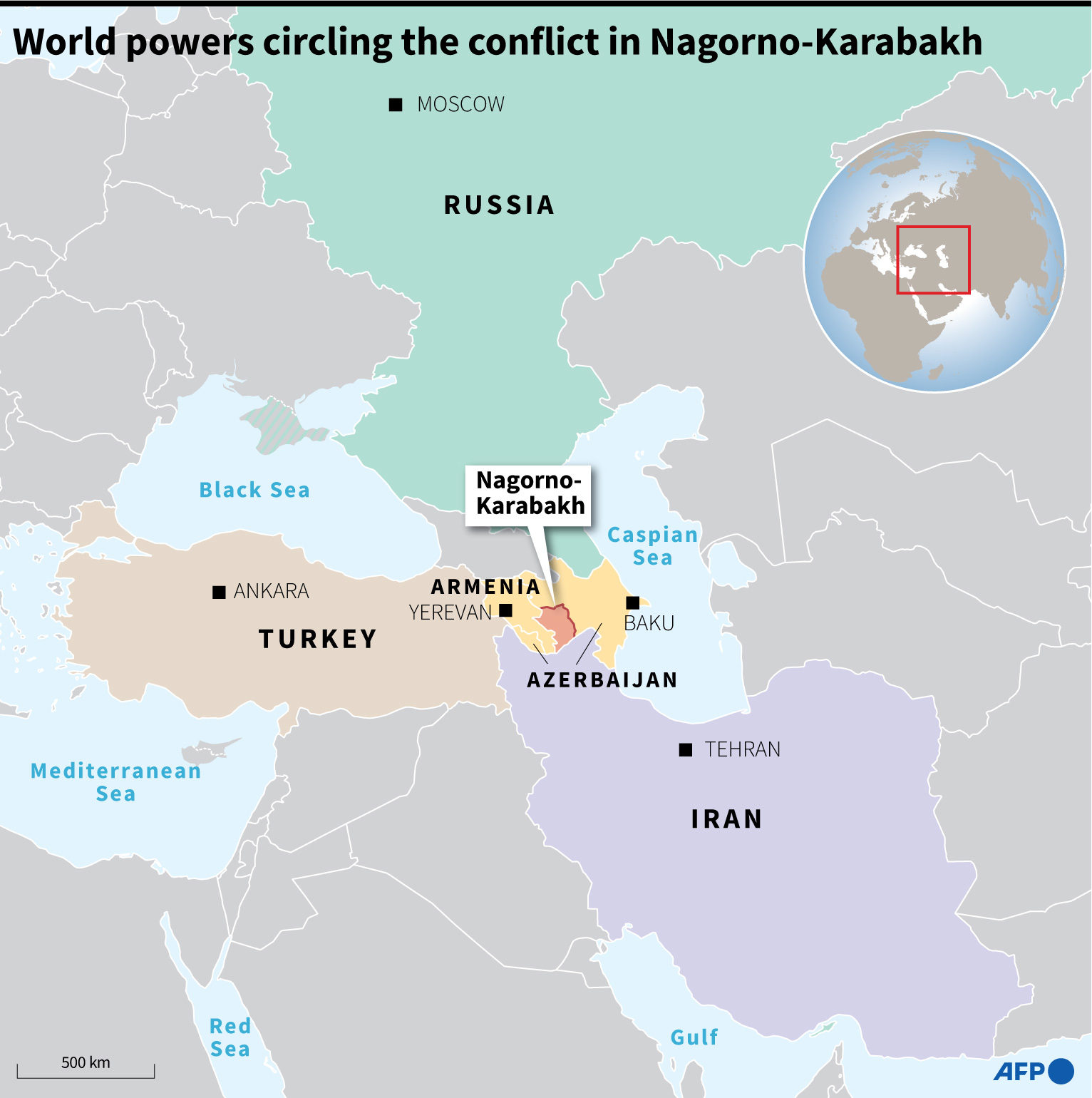
A man looking out from his damaged home in the city of Terter after the ceasefire in Nagorno-Karabakh began on 10 October. /Umit Bektas/Reuters
A man looking out from his damaged home in the city of Terter after the ceasefire in Nagorno-Karabakh began on 10 October. /Umit Bektas/Reuters
Less than 24 hours after a ceasefire was agreed between Armenia and Azerbaijan in the disputed territory of Nagorno-Karabakh, both sides have accused each other of violating the truce.
Minutes after the ceasefire took force at midday, the Armenian defense ministry accused Azerbaijan of shelling a settlement in southeastern Armenia, killing one civilian, while Azerbaijan said Armenia was firing into the Azeri regions of Terter and Agdam. Both defense ministries denied violating the terms of the ceasefire.
CLICK: RECYCLING, MEDICINE AND CHEESE – THE STORY OF HUMANS AND BACTERIA
Azerbaijan also reported that at least seven people died in an Armenian bombardment on Saturday night in the Azerbaijani city of Ganja, the country's second city. The area that was hit is said to have no military targets.
Accounts of fresh shelling in Stepanakert, Nagorno-Karabakh's capital, were reported by the Armenian media and eyewitnesses on Saturday evening.

Relatives react by the coffin of soldier Vazgen Aslanyan, who was killed in the fighting in Nagorno-Karabakh. /Karen Minasyan/AFP
Relatives react by the coffin of soldier Vazgen Aslanyan, who was killed in the fighting in Nagorno-Karabakh. /Karen Minasyan/AFP
What is happening in Nagorno-Karabakh?
The latest violent outbreak in this 30-year conflict between the two countries exploded on 27 September and has already claimed the lives of hundreds of people, many of them civilians. Officials say about 70,000 people living in Nagorno-Karabakh have been displaced.
It's the worst outbreak of violence in the territory in decades, and many fear it could draw in bigger powers like Russia, which has a mutual defense pact with Armenia, and Turkey, which has been supporting Azerbaijan, and thus spiral into a wider war.

Women cry as their relatives are missing under the debris of a blast site hit by a rocket during the fighting over the breakaway region of Nagorno-Karabakh in the city of Ganja, Azerbaijan. /Umit Bektas/Reuters
Women cry as their relatives are missing under the debris of a blast site hit by a rocket during the fighting over the breakaway region of Nagorno-Karabakh in the city of Ganja, Azerbaijan. /Umit Bektas/Reuters
Russian President Vladimir Putin said he would honor the defense agreement with Armenia if the conflict extends to the country's territory.
The truce, reached on Saturday after 10 hours of talks in Moscow supported by Putin, was meant to halt fighting in Nagorno-Karabakh to allow ethnic Armenian and Azeri forces to swap prisoners and the dead. It was supposed to be a first step towards peace talks that would end the conflict.

Protests were held in Europe against the conflict. Here, people supporting Armenia protest in Brussels, Belgium. /Yves Herman/Reuters
Protests were held in Europe against the conflict. Here, people supporting Armenia protest in Brussels, Belgium. /Yves Herman/Reuters
Why is there conflict between Armenia and Azerbaijan?
The conflict between the two countries around the small territory of Nagorno-Karabakh has been unresolved for almost three decades.
Its origins date back to when both Armenia and Azerbaijan were Soviet republics. Under the Soviet Union, the territory of Nagorno-Karabakh was an autonomous region part of Soviet Azerbaijan.
As the end of the Soviet Union approached, in 1988 Karabakh Armenians asked that the territory be transferred to Soviet Armenia. A full-scale armed conflict erupted in 1991, and the ceasefire of 1994 didn't quite resolve the conflict: around 60,000 Azerbaijanis were dispersed, fleeing the region, and Azerbaijan pledged to reconquer the territory it considers under its jurisdiction.

Map of the Caucasus and surrounding region showing the world powers circling Nagorno-Karabakh. /Sophie Ramis, Patricio Arana/AFP
Map of the Caucasus and surrounding region showing the world powers circling Nagorno-Karabakh. /Sophie Ramis, Patricio Arana/AFP
Under international law, Nagorno-Karabakh is recognized as part of Azerbaijan, but the country could never exercise authority on the region since the end of the yearlong ethnic war.
The majority of the population of Nagorno-Karabakh – about 150,000 people – is made up of ethnic Armenians. Armenia justifies the military defense of its people in the region on the basis of the persecution ethnic Armenians suffered during the fall of the Ottoman Empire when they were expelled from the Turkish territory.
There have been border skirmishes on the territory since the 1990s but none as significant and violent as the conflict that sparked at the end of September, in which the two countries are reportedly using heavy artillery such as drones and long-rage rockets.
Hopes that the conflict will be solved any time soon are slim, as the two countries seem far from reaching a settlement on a dispute. Azerbaijan's officials have reportedly said the country will continue fighting to recapture the 'occupied' territory until Armenia withdraws its troops from Nagorno-Karabakh.
Cover image: A soldier working on a blast site hit by a rocket during the fighting over the breakaway region of Nagorno-Karabakh in the city of Ganja, Azerbaijan. /Umit Bektas/Reuters